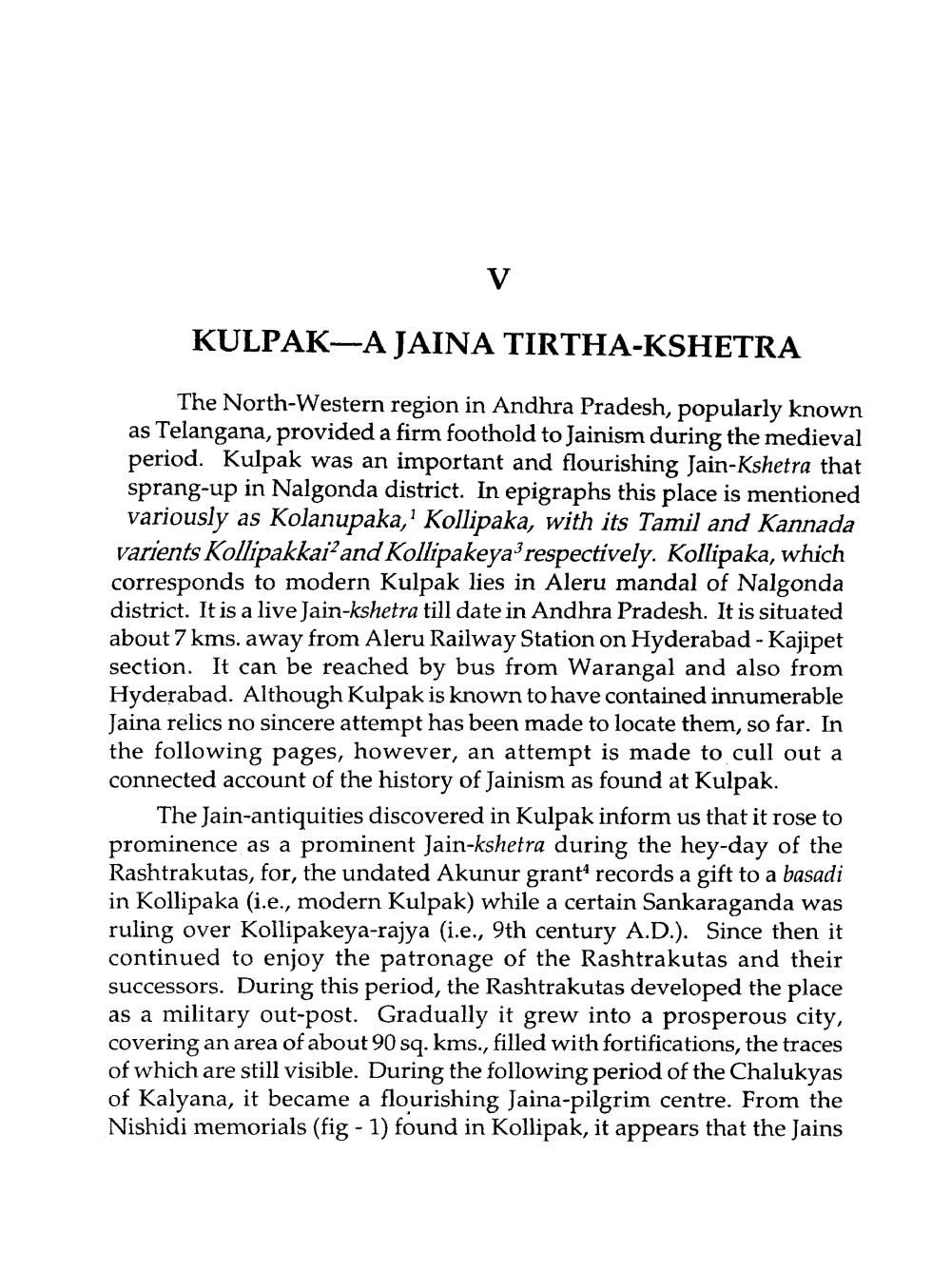________________
V
KULPAK-A JAINA TIRTHA-KSHETRA
The North-Western region in Andhra Pradesh, popularly known as Telangana, provided a firm foothold to Jainism during the medieval period. Kulpak was an important and flourishing Jain-Kshetra that sprang-up in Nalgonda district. In epigraphs this place is mentioned variously as Kolanupaka,' Kollipaka, with its Tamil and Kannada varients Kollipakkai2 and Kollipakeya3 respectively. Kollipaka, which corresponds to modern Kulpak lies in Aleru mandal of Nalgonda district. It is a live Jain-kshetra till date in Andhra Pradesh. It is situated about 7 kms. away from Aleru Railway Station on Hyderabad - Kajipet section. It can be reached by bus from Warangal and also from Hyderabad. Although Kulpak is known to have contained innumerable Jaina relics no sincere attempt has been made to locate them, so far. In the following pages, however, an attempt is made to cull out a connected account of the history of Jainism as found at Kulpak.
The Jain-antiquities discovered in Kulpak inform us that it rose to prominence as a prominent Jain-kshetra during the hey-day of the Rashtrakutas, for, the undated Akunur grant records a gift to a basadi in Kollipaka (i.e., modern Kulpak) while a certain Sankaraganda was ruling over Kollipakeya-rajya (i.e., 9th century A.D.). Since then it continued to enjoy the patronage of the Rashtrakutas and their successors. During this period, the Rashtrakutas developed the place as a military out-post. Gradually it grew into a prosperous city, covering an area of about 90 sq. kms., filled with fortifications, the traces of which are still visible. During the following period of the Chalukyas of Kalyana, it became a flourishing Jaina-pilgrim centre. From the Nishidi memorials (fig - 1) found in Kollipak, it appears that the Jains




